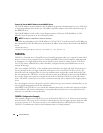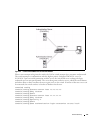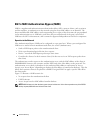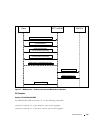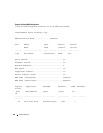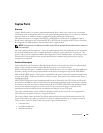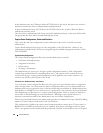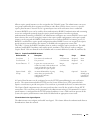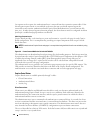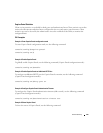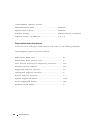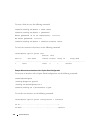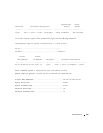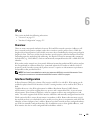
128 Device Security
In response to the request, the authenticated user is removed from the connection status tables. If the
client logout request feature is not enabled, or the user does not specifically request logout, the
connection status remains authenticated until Captive Portal deauthenticates (session timeout, idle
time, etc.). In order for user logout to function properly, the client browser must be configured such that
JavaScript is enabled and popup windows are allowed.
Web Page Customization
Captive Portal provides a web interface to create and customize a specific web page for each Captive
Portal configuration. This is accomplished by providing text input components that accept Unicode
literal characters.
NOTE: Customization of Captive Portal web pages is accomplished using the Web UI and is not available by using
the CLI.
Figure 5-6. PowerConnect 6200 Series Switch with TACACS+
The administrator can download and configure image files for branding purposes. Each image must first
be copied onto the switch; Captive Portal provides a HTTP file browser component for this purpose. GIF
(Graphics Interchange Format) and/or JPEG (Joint Photographic Experts Group) file types are
supported. Once an image file is copied to the switch it can be selected from a drop-down list and
associated with a specific web page configuration.
The authentication server generates user verification pages upon receipt of a specific URL request. The
URL provides an interface identifier that links to the data in the Captive Portal configuration. The
authentication server reads the associated data to construct and serve the appropriate web page.
Captive Portal Status
Captive Portal status is available primarily through 3 tables:
• Client Connections
• Authentication Failures
• Activity Log
Client Connections
Client entries are added to and deleted from this table as each user becomes authenticated or de-
authenticated using Captive Portal. A trap is sent for every addition. Each table entry identifies the
authenticated user, the connection interface, and the captive portal instance for which the client is
authenticated and the current session time.
The administrator may issue a command to de-authenticate a connected client. As a result, the client
session is terminated and the associated entry is removed from the database. This does not prevent the
user from obtaining a subsequent captive portal connection. The administrator must remove the user
entry from the local user database (or RADIUS) configuration to prevent future connections.
The size of the table has a limit of 1024 entries. If the list becomes full, new table entries are rejected and
a trap is sent for every rejected client.



